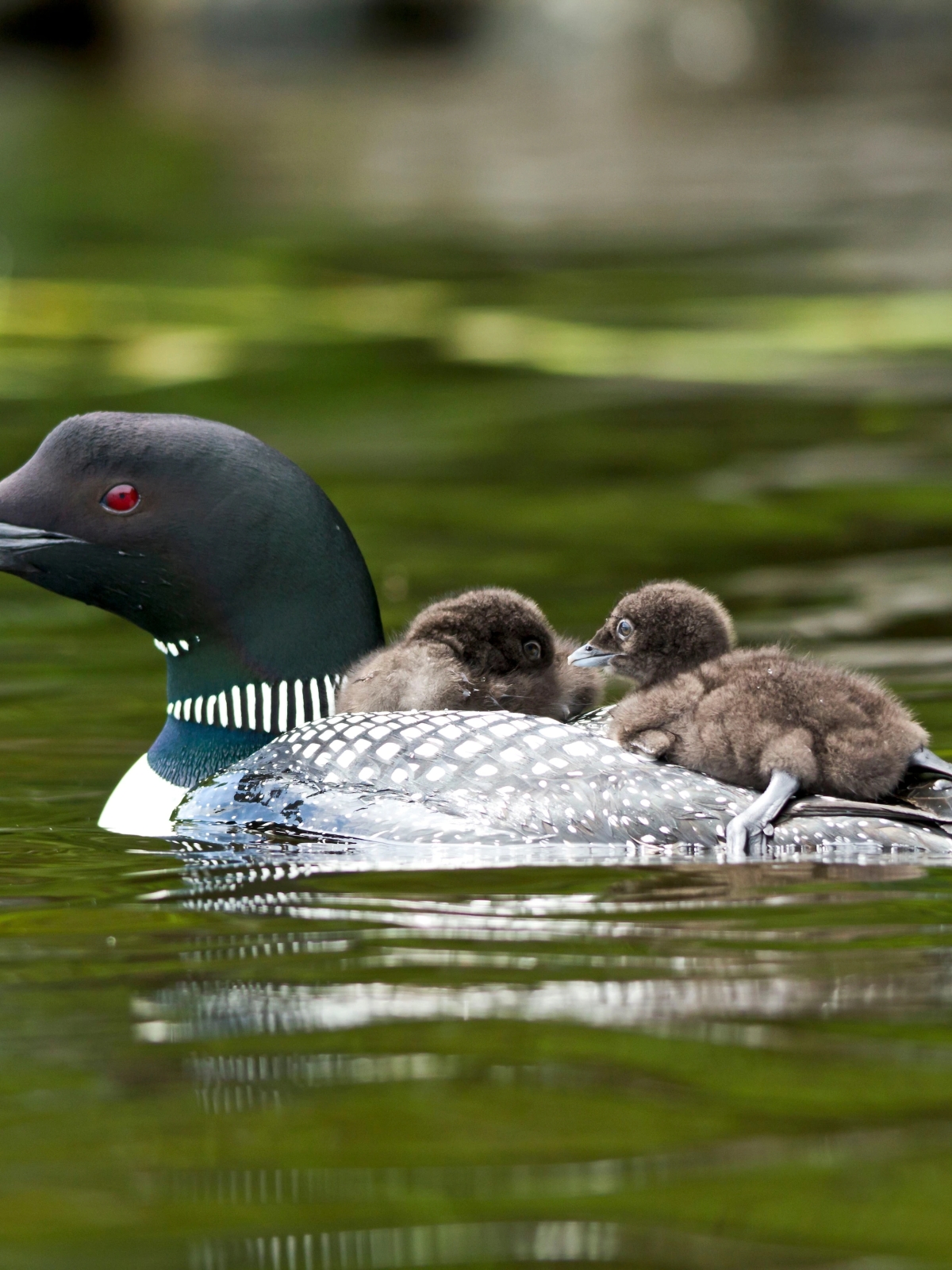Common Loons have deeply insane diving and underwater skills and some wildly crazy vocalizations.

Loons capture fish by swimming through through water. This torpedo-like attack is fueled by short, strong legs and webbed feet that provide excellent underwater speed and maneuverability.
Olympic swimmers would envy the Loons ability to make abrupt 180-degree flip turns in seconds. They would also be amazed at how the birds are able to dive without a splash and reach depths of over 200 feet. Even newly hatched chicks are able to make shallow dives to escape predators.
How do Loons swim like that?
To start with, Loons have web feet that are placed far back on their bodies. Four hundred different species of birds have webbed feet, as well as, otters, frogs, and salamanders. Web feet spread out to push the water backwards. The toes fold together minimizing water resistance on the forward stroke.

Webbed-feet are hard to walk with. In the case of the Loon feet are placed near the back of the body making it even more difficult, some say comical, for the bird to walk on land. To experience this problem, slide on a pair of large swim fins and try to walk across the lawn. Now you know why loons spend so much time in the water and only come near shore for nesting.
Loons are less buoyant than most flying birds. Loons have heavy, solid bones that serve as underwater ballast and help them dive deep. The bones of most other flying birds are hollow and filled with air.
These birds expel air out of their lungs and plumage when diving. This reduces water resistance and buoyancy and creates a very streamlined body shape. At the same time, their heart slows down to conserve oxygen and they are able to maintain the dive for several minutes.
What are they eating?
These extraordinary swimming skills are needed to capture fish, their diet mainstay. Some fish have erratic swim patterns and are easily caught by the Loon (this includes Bluegill and Yellow Perch). Fish that swim straight ahead (like salmon and trout) are more difficult.
Fish are caught underwater and often swallowed head first. Sometimes larger fish may be brought to the surface. Other prey may include crustaceans, crayfish, snails, leeches, lobsters, insect larvae, mollusks, frogs, worms, and occasionally aquatic plants.
Adult loons may eat up to two pounds of fish per day, and a loon family with two chicks may consume over 900 pounds of fish over the course of a breeding season.
How well do they fly?
Loons can fly ~70 mph and routinely migrate. They are like a jumbo-jet—they need a lot of space to take off and land. At times, a Loon can become stranded and unable to take-off if the pond is too small. They are not able to take-off and fly from land.
Loons are fast flyers and have a wide territory in the coastal U.S., and northern U.S. and southern Canada. Many migrate and over winter in coastal areas. Some migrate south into Baja California. In all cases, they will only stay in waters that are crystal clean and well populated with fish.
Loon call
Loons are often identified by their eerie, and unusual calls. They use a tremolo call (that sounds like crazy laughing) when alarmed or to announce their presence and soft hoots to keep in contact with their young and each other. Each male loon also has a unique yodel used to identify territory.


